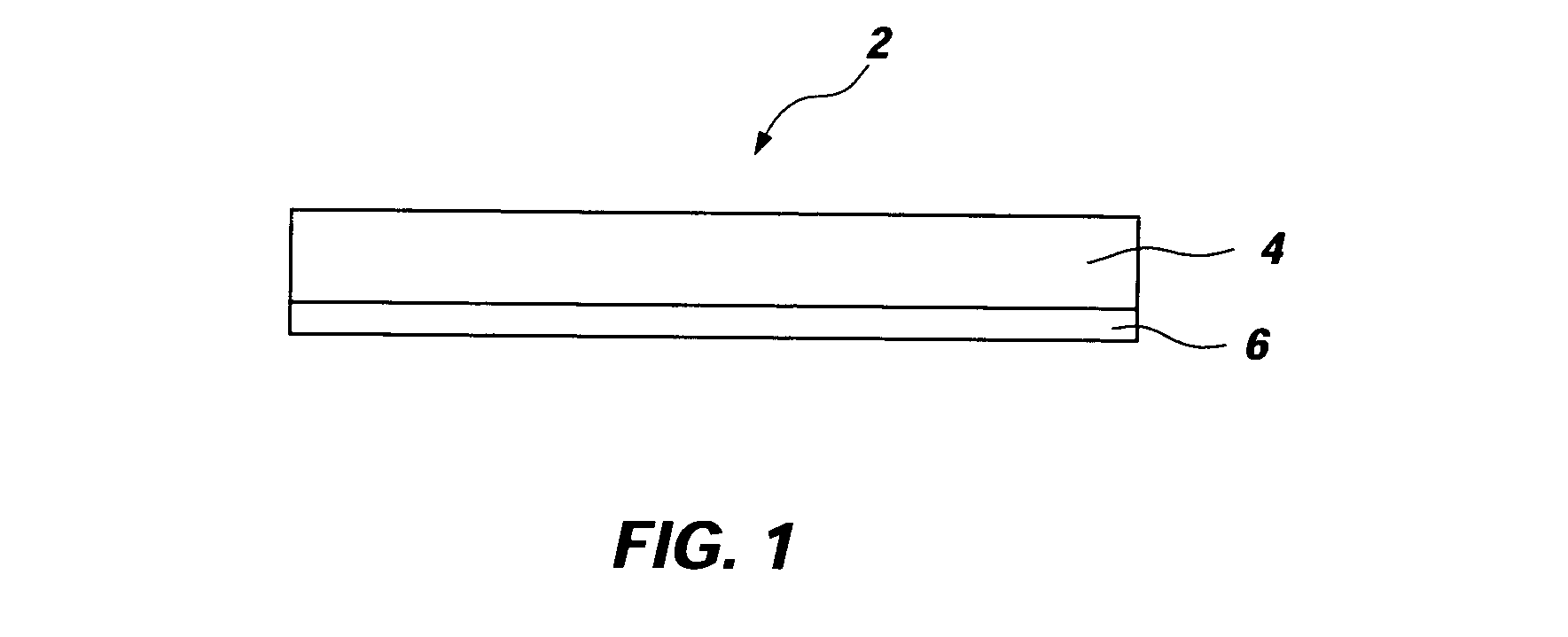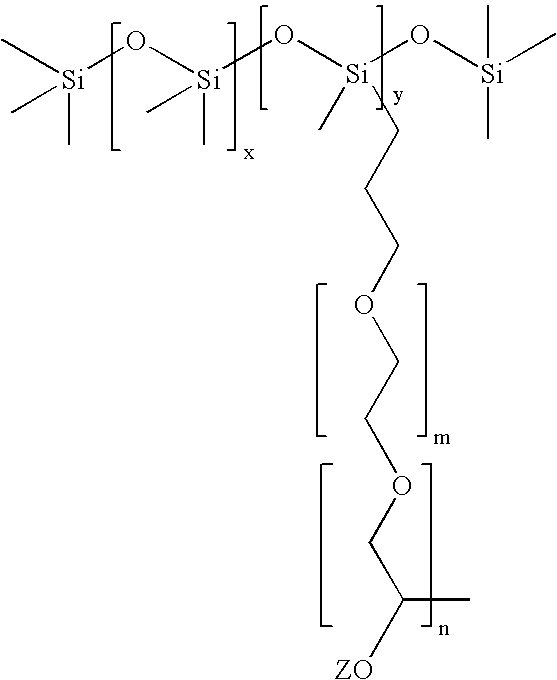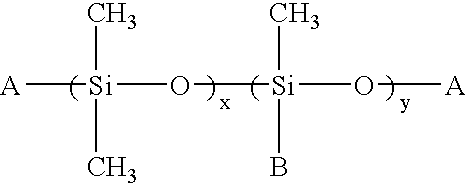Inkjet recording materials containing siloxane copolymer surfactants
a technology of copolymer surfactants and inkjet recording materials, applied in the field of print media, can solve the problems of reduced smearfastness, poor lighfastness, and low color gamut of porous media, and achieve the effect of improving image quality and permanen
- Summary
- Abstract
- Description
- Claims
- Application Information
AI Technical Summary
Benefits of technology
Problems solved by technology
Method used
Image
Examples
example 1
Formulations of Coating Compositions Used in Surfactant Comparison
General formulations of each of the coating compositions tested are shown in Table 1. Each of the coating compositions was produced by mixing the listed components. The amount of each component in each of the coating compositions is listed as parts by weight, unless otherwise indicated. The percent of the surfactant was based on the total weight of the coating compositions. The percent solids of the coating compositions were from approximately 13% to approximately 15% (about 14% on average) solid. While the order of addition of the components was not critical, improved image quality was observed in formulations having the mordant mixed into the coating composition last.
The coating compositions were applied to Mega Gloss® coated and offset papers (all products of Zanders Feinpapiere AG) to form the ink-receiving layer 4 of the print media 2. Coating compositions 1-29 were applied to the coated paperbase 6 with a My...
example 2
Image Quality Evaluation
To determine the image quality and printing characteristics of the print media, print samples were generated using a Hewlett-Packard DeskJet® 970 printer. Twenty-eight different samples were printed on print media having the coating compositions described in Example 1 with the surfactant being substituted with each of the various nonionic surfactants listed in Table II.
The haze uniformity (for each of composite black and for 100% cyan plus !00% magenta) and differential gloss were determined with a BYK GB-4535 gloss / haze meter by measuring the 20 degree gloss / haze of KCM squares at 50 and 100% saturation in comparison to the unimaged area. For the haze evaluation, the numbers were compiled and given a grading of A through D (with A being excellent and D being poor). For the differential gloss evaluation, a rating of good, fair, or poor was given for each sample. Mottling is the unevenness of the image after the print has dried for 24 hours. The mottle rat...
PUM
| Property | Measurement | Unit |
|---|---|---|
| surface tension | aaaaa | aaaaa |
| wt % | aaaaa | aaaaa |
| structure | aaaaa | aaaaa |
Abstract
Description
Claims
Application Information
 Login to View More
Login to View More - R&D
- Intellectual Property
- Life Sciences
- Materials
- Tech Scout
- Unparalleled Data Quality
- Higher Quality Content
- 60% Fewer Hallucinations
Browse by: Latest US Patents, China's latest patents, Technical Efficacy Thesaurus, Application Domain, Technology Topic, Popular Technical Reports.
© 2025 PatSnap. All rights reserved.Legal|Privacy policy|Modern Slavery Act Transparency Statement|Sitemap|About US| Contact US: help@patsnap.com



